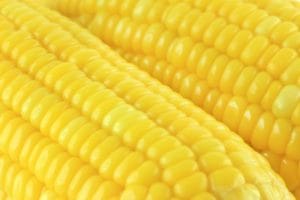Brattleboro.com
Anthony Samsel
If you want to avoid obesity, then avoid eating genetically engineered ( GE ) corn, corn based products and animals that are fed a diet of GE grain. Scientists in Norway have released results from experimental feeding studies, carried out over a ten year period. The results show a positive link between GE corn and obesity. Animals fed a GE corn diet got fatter quicker and retained the weight compared to animals fed a non-GE grain diet. The studies were performed on rats, mice, pigs and salmon achieving the same results.

The animals were fed a diet of GE corn and soy which contained toxic proteins from the bacteria Bt or Bacillus thuriengensis. Bt is an insecticide that works by killing larval insect pests which damage corn, soy, cotton, canola and other crops. By inserting and gene stacking various Bt toxins along with herbicide resistant gene sequences, the plants DNA is altered or genetically engineered for a specific purpose.
In the case of industrial agricultural GMO crops (genetically modified organisms), like those mentioned above, the entire plant is made into a pesticide factory which is also resistant to herbicides. Roundup, a Monsanto product is a glyphosate herbicide used to kill weeds. It is the most popular herbicide used on herbicide tolerant GE crops.
Researchers also found that rats, fed a diet of fish who consumed GE grain, had the same result – both got fatter faster. Translated to humans, the study suggests: if you dine on meat from an animal which was fed GE grains or consume products made from GE grains like corn, you could get the same adverse life altering effects. You could get fatter faster and retain the weight. These GE foods transfer their effects to you.
The purpose of professor Åshild Krogdahl and her collaborators study, at the Norwegian Veterinary College, was to determine if eating genetically modified grain had any adverse effects on animals which included rats, mice, fish and pigs. The work was a multi-national collaboration with researchers from Austria, Hungary, Ireland, Turkey and Australia.
The project did not just focus on weight gain but looked at the effects on organ changes too. Researchers found distinct changes to the intestines of animals fed GMOs compared to those fed non-GMOs. This confirms other studies done by US researchers. Significant changes occurred in the digestive systems of the test animals major organs including the liver, kidneys, pancreas, genitals and more.
Krogdahl notes: ” The ones who had fed on GM corn were slightly larger, they ate slightly more, their intestines had a different micro-structure, they were less able to digest proteins, and there were some changes to their immune system.” This fact that ‘they were less able to digest proteins’ has huge implications in the biochemistry of amino acids necessary for all life processes. This not only may relate to a rise in obesity, but to increases in many modern diseases. These diseases include diabetes, digestive disorders, inflammatory bowel disease, colitis, autism spectrum disorders (ASD) (ADD), autoimmune diseases, sexual dysfunction, sterility, asthma, COPD and many more.
The proper digestion of protein is necessary for many biological functions which include providing the body with amino acids. Some amino acids, like essential amino acids, cannot be synthesized by the body and must be obtained from other sources. Other sources of amino acids include milk, eggs, fish, meat, corn, soy, whole grains and other plant proteins. Disruption and lack of amino acids is directly responsible for many diseases. A GMO food source like genetically engineered corn, soy and products made from GMOs, which interferes with the bodies biochemistry, is not only dangerous to human health, it is dangerous to all life feeding on it. This includes farm animals, wild animals, honey bees, other pollinators, birds, amphibians, fish and bacteria.
Professor Krogdahl explains: “It has often been claimed that the new genes in genetically modified foods can’t do any damage because all genes are broken down beyond recognition in the gut. Our results show the contrary that genes can be taken up across the intestinal wall, is transferred to the blood and is left in the blood, muscle and liver in large chunks so that they can be easily recognized.”
The professor later again emphasized: “A frequent claim has been that new genes introduced in GM food are harmless since all genes are broken up in the intestines. But our findings show that genes can be transferred through the intestinal wall into the blood; they have been found in blood, muscle tissue and liver in sufficiently large segments to be identified ….. The biological impact of this gene transfer is unknown.”
This is a very important finding which disproves Monsanto’s and other bio-tech seed producing company claims that GE food is harmless.
There are no laws in the USA requiring genetically engineered food, or GMOs to be labeled. The biotech corporations which include Monsanto, Dow, Dupont, BASF, Syngenta and Bayer don’t want you to know. The sales of their seeds, herbicides and other industrial farm chemicals depend on you not knowing what you are being exposed to. Studies have shown given a choice most consumers would not buy GMOs or products derived from GMOs.
The varieties of GE food, many of which contain bio-pesticides and herbicide resistance include: corn, maize, soy, canola, cotton, alfalfa, barley, rice, sugar beets, cabbage, sugar cane, wheat, zucchini, yellow summer squash, papaya, bananas, grapes, potatoes, tomatoes, eggplant, groundnut, chicory, cantaloupe, cucumber, melon, plum, apple… and counting! Many varieties are currently undergoing field trials so their pollen is already being shared in the environment corrupting honey bees and other pollinators destroying the planets naturally occurring biodiversity.
Readers are encouraged to contact their Congressional representatives, the EPA and the USDA and demand policy change for the protection of human health and the environment.
Anthony Samsel is a member of the Union of Concerned Scientists, the Collaborative on Health and the Environment and a retired consultant to Arthur D. Little, Inc.

